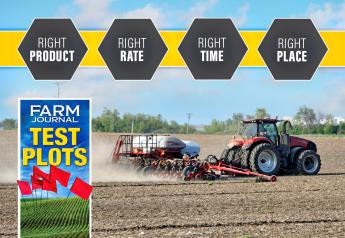Bayer Optimistic as it Looks Toward the Future

This week Bayer Crop Science brings together media and leaders from across the world to Germany to discuss the future of farming. The company reports that it has a positive outlook for ag’s future as well as the future of their business. Bayer leaders say they are specifically excited about growth in seed and crop protection, research and development (R&D) and communicating more with consumers.
Seed and crop production growth
“Despite the current market volatility, our Crop Science business is well positioned to fulfill future customer market and societal needs,” says Liam Condon, Bayer management board member and president of the crop science division. Population growth, changes in consumer preferences and increased demand for sustainably produced food gives Condon confidence.
“Those factors, combined with the steadily growing global demand for feed and biofuel feedstocks support a long-term increase in demand that will drive our business,” he says.
While market volatility also rocked Bayer’s business in Brazil, the company is forecasting growth in the country for 2018. Last year the company experienced a drop in sales that it attributes to lower pest pressure and drought that led to less need for crop protection products.
Enhanced R&D
Because of its confidence in farmers’ demand for products, Bayer invests EUR 1 billion in R&D annually. The R&D pipeline will bring 15 new products to farmers by 2020 and the company is partnering with others to reach into new and evolving fields of agriculture.
“Through strategic research partnerships, crowd-sourcing tools and venture capital funding, we are collaborating on multiple fronts to ensure that we can continue to pioneer innovation in agriculture,” says Adrian Percy, global head of research and development. For example, Bayer recently entered into an agreement with Ginkgo Bioworks to look at the plant microbiome with a focus on nitrogen fixation and also nitrogen availability in plants.
Bayer’s investment spans not only crop protection and seeds, but in digital agriculture as well. “We are committed to investing at least EUR 200 million in our Digital Farming business between 2015 and 2020,” Condon says. The company currently has Digital Farming products in more than 30 countries.
Communicating with Consumers
As ag technology advances, consumers are asking companies and farmers for more transparency into the food supply. Bayer says it is committed to safety and transparency and will provide safety-related study summaries for many active substances available online along with video tutorials and infographics to explain scientific material. This website will go live at the end of 2017.







